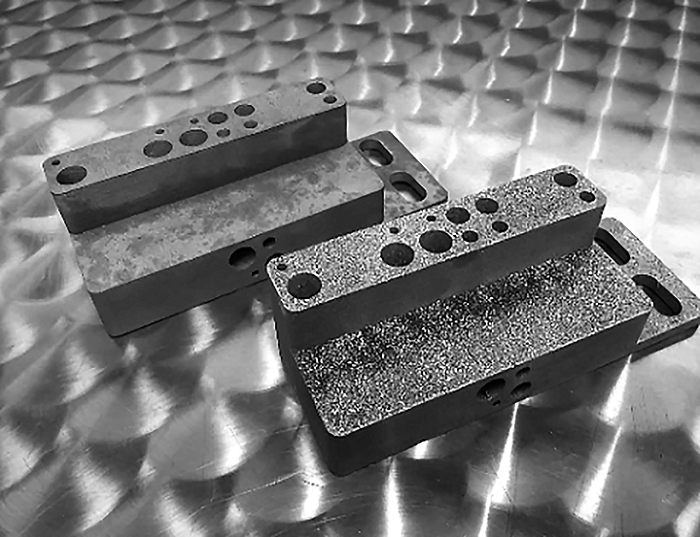ASTM G133 Wear Testing of Coatings and Surface Layers
The ASTM G133 standard specifies a method for evaluating the wear resistance of coatings and surface layers using an oscillating pin-on-disc tribometer. This testing is critical in determining how well a coating or surface layer will perform under abrasive conditions, ensuring it can withstand wear without failure.
Wear testing is particularly important in industries where surface integrity and durability are paramount, such as automotive, aerospace, and medical devices. The ASTM G133 method provides a controlled environment to simulate real-world operating conditions, allowing for the quantification of the wear resistance properties of coatings or surface treatments. This helps manufacturers optimize their materials and processes to meet performance specifications and regulatory requirements.
The testing procedure involves placing a specimen (the coating or surface layer) on a rotating disc in contact with an oscillating pin. The pin is made from a material known for its hardness, typically tungsten carbide, which ensures consistent wear against the test sample. The test runs until either the coating thickness has been reduced to a predetermined limit or until a specified number of cycles have been completed.
The results of ASTM G133 testing are critical in several ways. They provide data on the wear resistance and durability of coatings, which can help in selecting materials that will perform well under expected operating conditions. The test also aids in optimizing manufacturing processes to improve coating quality and longevity.
For industry applications, this testing method is particularly relevant for sectors like automotive, where coatings protect against abrasive particles during engine operation; aerospace, where wear resistance is critical in high-stress environments; and medical devices, ensuring that surface layers on implants or surgical tools can withstand the rigors of use. The results from ASTM G133 help ensure compliance with standards such as ISO 14644-2 for medical device coatings.
| Industry | Application |
|---|---|
| Aerospace | Evaluating coating durability under high-stress conditions |
| Automotive | Testing the abrasion resistance of engine components |
| Medical Devices | Ensuring implant coatings can withstand wear and tear |
The ASTM G133 method also supports environmental sustainability by promoting the use of longer-lasting materials, thus reducing waste. By ensuring that coatings and surface layers are durable, this testing helps extend the lifespan of products, thereby decreasing the frequency of replacements and the associated environmental impact.
Industry Applications
- Aerospace: Ensuring durability in high-stress environments where wear resistance is crucial.
- Automotive: Evaluating coating abrasion resistance to protect against abrasive particles during engine operation.
- Medical Devices: Guaranteeing that surface layers on implants or surgical tools can withstand the rigors of use and are safe for long-term patient contact.
The ASTM G133 test is also beneficial in manufacturing quality control, as it provides consistent data to monitor process improvements. By regularly testing coatings and surface layers, manufacturers can identify any variations in material quality or process parameters that may affect performance.
Another application of the ASTM G133 method is in the development of new materials for coatings. Researchers use this test to determine how different chemical compositions influence wear resistance. This information is vital for innovation in coating technology and can lead to the creation of more effective protective layers.
Environmental and Sustainability Contributions
The ASTM G133 method contributes significantly to environmental sustainability by promoting the use of durable materials, which helps reduce waste. By ensuring that coatings and surface layers are robust enough to last longer, this testing reduces the frequency of replacements, thereby decreasing the overall carbon footprint associated with manufacturing and disposal.
Additionally, the test supports lifecycle optimization by helping manufacturers design products that can withstand harsh conditions for extended periods. This not only extends product life but also minimizes the need for frequent repairs or replacements, leading to lower resource consumption and energy use over time.
The ASTM G133 method is an integral part of sustainable manufacturing practices, aligning with global efforts to reduce environmental impact. By providing data on wear resistance, this test aids in the development of more efficient and environmentally friendly products.
Competitive Advantage and Market Impact
- ASTM G133 testing ensures compliance with industry standards, giving companies a competitive edge by meeting regulatory requirements.
- The test results provide valuable insights into material performance, enabling informed decision-making for process improvements and product development.
- By demonstrating superior wear resistance through ASTM G133 testing, manufacturers can differentiate their products in the market, attracting customers seeking reliable and durable solutions.
Innovative companies that invest in ASTM G133 testing gain a deeper understanding of material performance, which can lead to product differentiation. This knowledge allows them to innovate more effectively and stay ahead of competitors by offering superior quality and reliability.
The test also supports long-term relationships with customers by ensuring consistent product performance over time. By providing reliable data on wear resistance, manufacturers can build trust and reputation in the market, which is crucial for maintaining customer loyalty and fostering new business opportunities.





